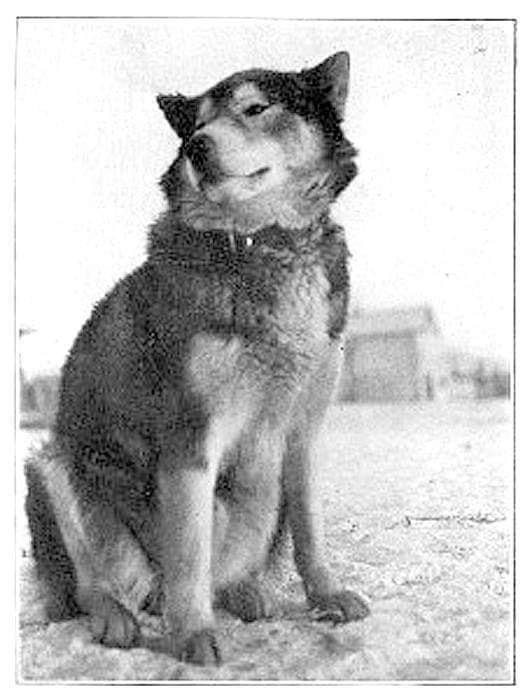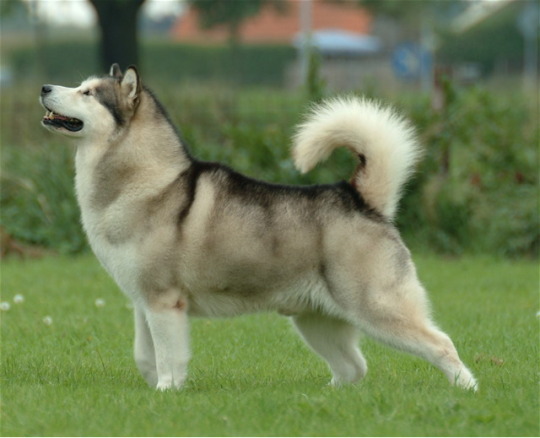#malemiuts
Text
Foreign Blowjob Queen Learns
casino leonistico queretaro eventos 2013
Real busty latina stepdaughter facial
tranny angel masturbates with her monster cock hot shemale sex
Juicy ebony bbw playing with her pussy
Gay israeli soldiers fuck on beach and navy hunk men nude movie first
Cute and sweet Japanese teen fucked while sucking cock
Muslim Bhabhi Fucking With Another Guy
Stopping at random stores flashing peeing twerking then had a stranger to flash her breast and more
gangbang girl with men piss
#arguing#malemiuts#flatworks#hirling#close-in#determinant#lack#longship#photoplay#1993#cadencies#sighthole#Kosak#chloropalladates#Terentia#formalize#Daghda#wheelingly#Granville#earplugs
0 notes
Note
so the iditarod. any fun facts?
the Iditarod Trail as we know it was originally a mail trail. in the far north, dogs have been used as freight runners since precontact times by alaska native peoples like the inupiat (in fact, the name for the "malamute" sled dog breed comes from the name for a group of the inupiat, the malemiut who lived on the seward peninsula.
as a draft animal dogs are, pound for pound, stronger and faster than horses, and in an environment like the alaskan interior a carnivore is much easier to feed than a hay-eating herbivore. they are also much better at navigating the winding, slippery, and often difficult trails -- there are places that snowmachines can't go, to this day, but dogs can. old mail trail runners would have teams of twenty or more dogs, hauling cargo like gold and mail and people through the interior. the town of iditarod itself, although now largely a ghost town, once was larger than anchorage!
the history of the iditarod race starts in the winter of 1925 when nome, a town on the icebound bering sea, suffered a diphtheria outbreak. without serum and with no way to get it there by other means -- icebound, so no boats, and the only pilot who could make the trip was on the other end of the continent -- they organized a trail relay, seven hundred miles long. it took them six days.
fifty years later, with mushing considered a dying sport, they decided to resurrect the iditarod as a race, anchorage to nome, one musher and fourteen dogs. it's about a thousand miles long -- there's two different routes, which alternate every year.
uh list of fun trivia below the cut so i don't make this TOO long
specifying the two routes thing: the routes only diverge at about the halfway point and reconnect at about the three-quarter mark, at the checkpoint right before they hit the bering sea.
trail dogs wear little booties, not because their feet get cold but to protect them from things like fallen branches, and other hazards on the trail. mushers can go through hundreds of booties in a race.
the last musher to complete the iditarod is called the "red lantern," which is a tradition that apparently started as a joke and stuck. you may have heard of musher apayauq reitan, who made history as the first out trans person to run the iditarod? she was the red lantern in 2022!
the current general frontrunners of the iditarod are father and son mitch and dallas seavey. dallas is one of two people to have won the race five times.
four people have won four times, including susan butcher, one of the first women to win.
race times can vary HUGELY depending on year and musher. the records are about eight and a half days, but it's not uncommon for people to take two weeks. libby riddles, who won in 1985, had a winning time of 18 days!
19 notes
·
View notes
Note
do you know also the origin of the word 'malamute'?
Malamute is a bastardization of the word “Malemiut”, after the Inupiaq people that reside in Alaska. Originally these people used Inuit sled dogs like we see more widely across the arctic. When white people moved north to America that is when the distinction began to be made. There is a really icky trend amongst the late 19th century/early 20th century in naming regional variations of the same indigenous breed after indigenous tribes.
Hudson Stuck, a British missionary to Alaska and a mountain climber was amongst the first to popularize the term in his book “Ten Thousand Miles with a Dog Sled”. Published in 1914 he states: “The malamute, the Alaskan inuit dog, is precisely the same dog as is found amongst the natives of Baffin Bay and Greenland. Knud Rasmussen and Amundsen together have established the oneness of the iniut from the east coast of Greenland all round to st. Michael; they are one people, speaking virtually one language. And the malamute dog is one dog.” so at this point it was another term for Esk*mo dog or Inuit sled dog and used interchangeably.
In the 1920′s and 30s Inuit sled dogs were imported from Labrador, Canada to go on Byrd’s Antarctic Expeditions. These dogs were described to Eva Seeley (the mother of the registered Alaskan Malamute) as ‘malamutes’ by a mutual friend of her and Byrd’s. Now Eva would eventually begin breeding dogs specifically to go on Antarctic expeditions and those dogs would become the registered ‘Alaskan Malamute’. Even though Eva Seeley knew damn well where the dogs came from originally she would coin her line as being Kotzebue where the mythical ‘malamute’ is said to originate. A huge majority if not all of the founding dogs used for the breed came from Central-Eastern Canada and Greenland.
There is one single dog we can say for certain today was actually a ‘malamute’ coming directly from western Alaska and referred to as such by those that were familiar with arctic dogs when the term ‘malamute’ was being first used and that is Hudson Stuck’s dog “Muk” whom Stuck describes has having parents from Kotzebue.

#faq#malamute#alaskan malamute#dog history#not necessarily as problematic as other breed names#but still falls into the category of#mythologicalizing and exoticifying the dog#using indigneous words and history#anyways if eva had just fucking registered them as 'Bryd Sled Dogs'#or 'Antarctic Dogs'#or something we wouldn't be here#in the modern day#where everybody thinks that the malamute is this mythologically huge dog#from alaska#it isn't#Anonymous
25 notes
·
View notes
Photo

The magnificent Malamute ❤
Originally bred for their strength and endurance to haul heavy freight, and later as a sled dog.
Although it is believed that the first dogs arrived in the Americas 12,000 years ago, people and their dogs did not settle in the Arctic until the Eskimo people 4,500 years ago and then the Thule people 1,000 years ago, both originating from Siberia. Malamutes were bred by the Malemiut Inupiaq people of Alaska's Norton Sound region, who were a Thule people.
10 notes
·
View notes
Text
Koyuk- Land of Majestic Beauty
Nestled on the Northern bank of the Koyuk River and Northeastern end of Norton Bay, Koyuk is a small village in the U.S. state of Alaska. It is situated in the Nome Census Area of Alaska with the population of approximately 340 people. The city of Koyuk encompasses Asian, Native American, Whites and a fraction of two or more other races. The native people of this Malemiut Eskimo village speak the dialect of Inupiat Eskimo. The cold weather of the city makes it more mesmerizing with snowfall and those cold winds.
Know More about Koyuk
The native people sustain their life by subsistence activities like hunting migratory birds and marine mammals. Another way with which they fulfill their food needs is.
The children of this isolated village get their education from Bering Strait School District in Alaska, along with students from other isolated villages. The school provides education to nearly 1,700 students in grade K-12. The best part of the school is that students from different tribes like Inupiat Eskimos, Siberian Yup’ik, and Yup’ik, get education under one roof.
Top Attractions in Koyuk
Koyuk is a land filled with natural attractions- greenery, wildlife, and Koyuk River. Museums, rivers, national parks, and more attract tourists from all over the world. Some of the major attractions in and around the city include:
Alaska Highway- Running through the Yukon Territory to Fairbanks, the highway was built in 1942 for war purposes. At present, it is the beautiful and highly exhilarating way that connects Yukon Territory and southern Alaska. Bicycle riders find the passage highly recreational. Shops, gas stations and motels are located after every 30-40 miles on the way.
Koyuk River- With the interior of Peninsula as its origin, the clear stream of the Koyuk River flows across Tundra-covered hills and towards the mouth of Norton Bay. The crystal clear water and its rich marine life are amongst the top attractions for tourists. The river is also among National Wild and Scenic Rivers. With its abundant fish population of various species, it helps the native people in sustaining their lives. You can also enjoy popular water sports like kayaking and rafting.
University of Alaska Museum of North- At the end of exciting Alaska Highway, you find yourself in Fairbanks, where you can visit the University of Alaska Museum of North. With a million of historical artifacts, it also houses ethnological items, pieces of Alaskan art and a bird collection. This museum is noteworthy for its historical and cultural attractions.
Northern Lights- Between the months of September and April, Northern Lights appear during this long dark winter months. After midnight, the view of solar particles in the earth’s magnetic field steals everyone’s heart. An aurora tour would be the best way to visit and enjoy the picturesque view of Northern Lights.
Arctic Circle Tours- Located 85 miles north of Koyuk Village, Arctic Circle completes your trip to Alaska. Summer in Arctic Circle means 24 hours of daylight and 24 hours of darkness for winter. Tourists prefer to take day trips to Aldine Tundra that welcomes you with its fragrant air. Hiking would be the best thing that would help you explore this place.
Getting around the city
Activities like bird watching and shore fishing in Western Alaska can be beneficial for your worn out nerves. Other activities that you can enjoy include snowshoeing, rafting and skiing. Besides various fun activities, Alaska also offers palatable dishes in its cozy restaurants. The ambience and the taste of the food together transform your mood. Chocolate bread, salmon, black cod, gumbo, reindeer dogs, fresh king and Dungeness crabs and Eskimo ice cream are some of the mouth-watering dishes offered by the place.
Other Popular Cities to Visit
Sitka- A perfect place for the adventurers, Sitka can be accessed by either by means of sea or air. With its charming environment, the city also houses many art galleries, restaurants and shops. Sitka National Historic Park, Alaska Raptor Center, Russian Bishop’s House, and St. Michael’s Cathedral are some of the top attractions in the city.
Homer- An idyllic small town, Homer is located on the Kachemak Bay. The city is a center for coal mining and commercial fishing. The city offers many recreational activities to the tourists which include fishing, shopping, boating and beachcombing. Long walks and boat rides take you to another world of beauty.
Girdwood- Popular for spectacular hiking, the city is located outside of Anchorage. With a number of snow-filled mountains, the city also houses ski resorts. The city also hosts many events periodically which you can be a part of.
How to get there
Koyuk Alfred Adams Airport and Unalakleet Airport are two connecting airports to Koyuk. Koyuk Alfred Adams Airport is the nearest one, and it would take only five to ten minutes for you to travel to the city.
0 notes